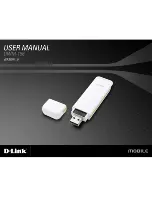
refer to the entire suite of related protocols.
1
nd averaged over two seconds.
ce
A)
22. Wide Area Network (WAN)
ts of multiple LANs that are tied together via telephone services and / or fiber optic
23. Wired Equivalent Privacy (WEP)
zed as flawed, WEP was a data encryption method used to protect the
nown, including an insufficient key length and no
automated method for distributing the keys. WEP can be easily cracked in a couple of hours with
lf tools.
2
A wireless LAN does not use cable to transmit signals, but rather uses radio or infrared to transmit
Frequency (RF) and infrared are the commonly used types of wireless
s is large.
with a large fragment
threshold, the overlap is small and the spatial reuse ratio is low. However high fragment threshold
9. Transmit / Receive
The wireless throughput in Bytes per seco
20. Wi-Fi Allian
The Wi-Fi Alliance is a nonprofit international association formed in 1999 to certify interoperability of
wireless Local Area Network products based on IEEE 802.11 specification. The goal of the Wi-Fi
Alliance’s members is to enhance the user experience through product interoperability. The
organization is formerly known as WECA.
21. Wi-Fi Protected Access (WP
The Wi-Fi Alliance put together WPA as a data encryption method for 802.11 wireless LANs. WPA is
an industry-supported, pre-standard version of 802.11i utilizing the Temporal Key Integrity Protocol
(TKIP), which fixes the problems of WEP, including using dynamic keys.
A WAN consis
cabling. WANs may span a city, a state, a country, or even the world
Now widely recogni
transmission between 802.11 wireless clients and APs. However, it used the same key among all
communicating devices. WEP’s problems are well-k
off-the-she
4. Wireless LAN (WLAN)
packets through the air. Radio
transmission. Most wireless LANs use spread spectrum technology. It offers limited bandwidth,
usually under 11Mbps, and users share the bandwidth with other devices in the spectrum; however,
users can operate a spread spectrum device without licensing from the Federal Communications
Commission (FCC).
25. Fragment Threshold
The proposed protocol uses the frame fragmentation mechanism defined in IEEE 802.11 to achieve
parallel transmissions. A large data frame is fragmented into several fragments each of size equal to
fragment threshold. By tuning the fragment threshold value, we can get varying fragment sizes. The
determination of an efficient fragment threshold is an important issue in this scheme. If the fragment
threshold is small, the overlap part of the master and parallel transmission
This means the spatial reuse ratio of parallel transmissions is high. In contrast,
leads to low fragment overhead. Hence there is a trade-off between spatial re-use and fragment
overhead. Fragment threshold is the maximum packet size used for fragmentation. Packets larger
than the size programmed in this field will be fragmented If you find that your corrupted packets or
64
Summary of Contents for WNL-U554M
Page 1: ...150Mbps 802 11n Wireless USB Adapter WNL U554M ...
Page 9: ...9 ...
Page 24: ...24 ...
Page 29: ...Step 3 Double click Network Connections 29 ...
Page 34: ...34 ...






































